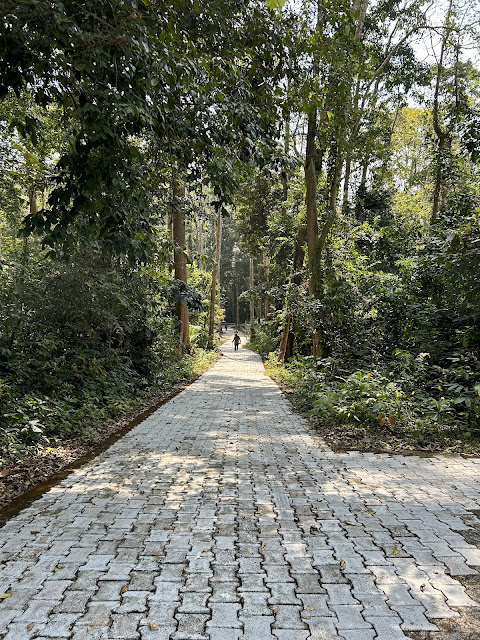Andaman Last Day - The Andaman wild pig
16th Feb 2024
 |
| I was a bit sceptical about going into a "zoo" - I dont like zoos. |
 |
| Andaman Wild Pigs from the enclosure. Does it still get to be called wild pig? |
"Andaman wild pigs are smaller in size with shorter limbs and a more compact body compared to mainland Indian pigs and what makes them unique is the higher oxygen carrying capacity of their blood.Unlike domesticated pigs fed a controlled diet, Andaman wild pigs have a diverse diet consisting of fruits, nuts, roots, and invertebrates. This variety provides a broader range of amino acids, the building blocks of protein, potentially leading to a more complete protein profile in their meat.Hunting the Andaman wild pig is culturally significant for the Jarawa, an indigenous tribe inhabiting parts of South Andaman and Middle Andaman Islands in India. Traditionally, a successful hunt of the wild pig signifies adulthood for a Jarawa man. These tribes are legally exempt from hunting restrictions imposed by the Wildlife (Protection) Act, 1972, which otherwise attracts punishment of 7 years of imprisonment.
The enclosure provides a near-natural habitat for the species. Infants receive no specific external care. Generally, the female pig fed the young piglets which transitioned into normal diets as they grew.
The research paper also detailed the special attention given to diet so that the captive bred wild pigs maintain their natural protein values. The diet of captivity is diverse, including coconut, wheat bran, groundnut cake, jaggery, salt, tapioca, potato, and pumpkin, based on their nutritional needs. Leafy vegetables are added for nutrition, and water troughs are provided. The enclosure includes trees for shade, an open canopy area for sunlight, and soft soil for natural behaviours like uprooting and foraging. Deworming is also done every six months. "
There was a reptile corner with Salties as well. Click here for more pictures...
 |
| It was goodbye to Haddo in Port Blair, |





what a trip!! well captured, thank you :)
ReplyDelete